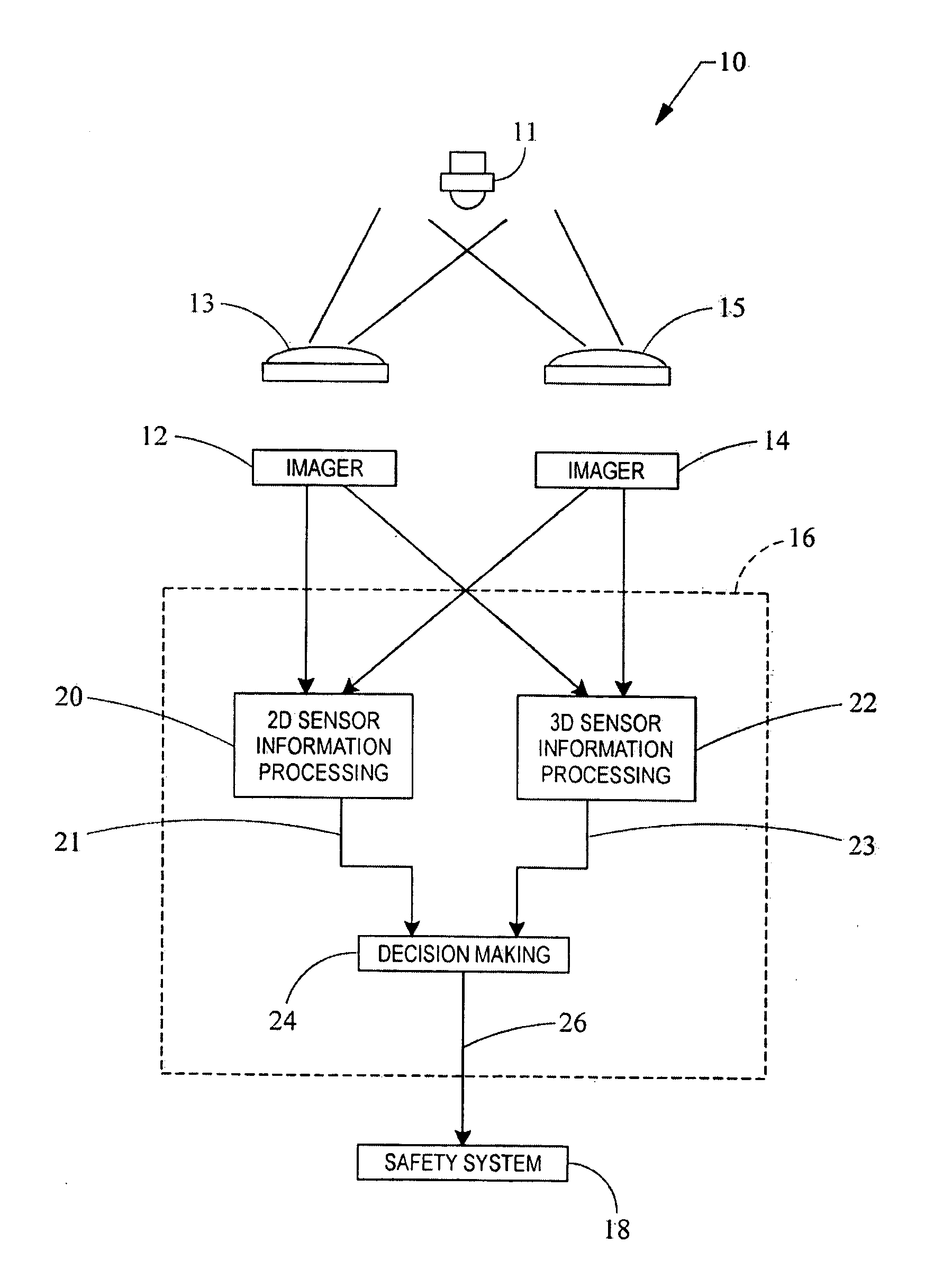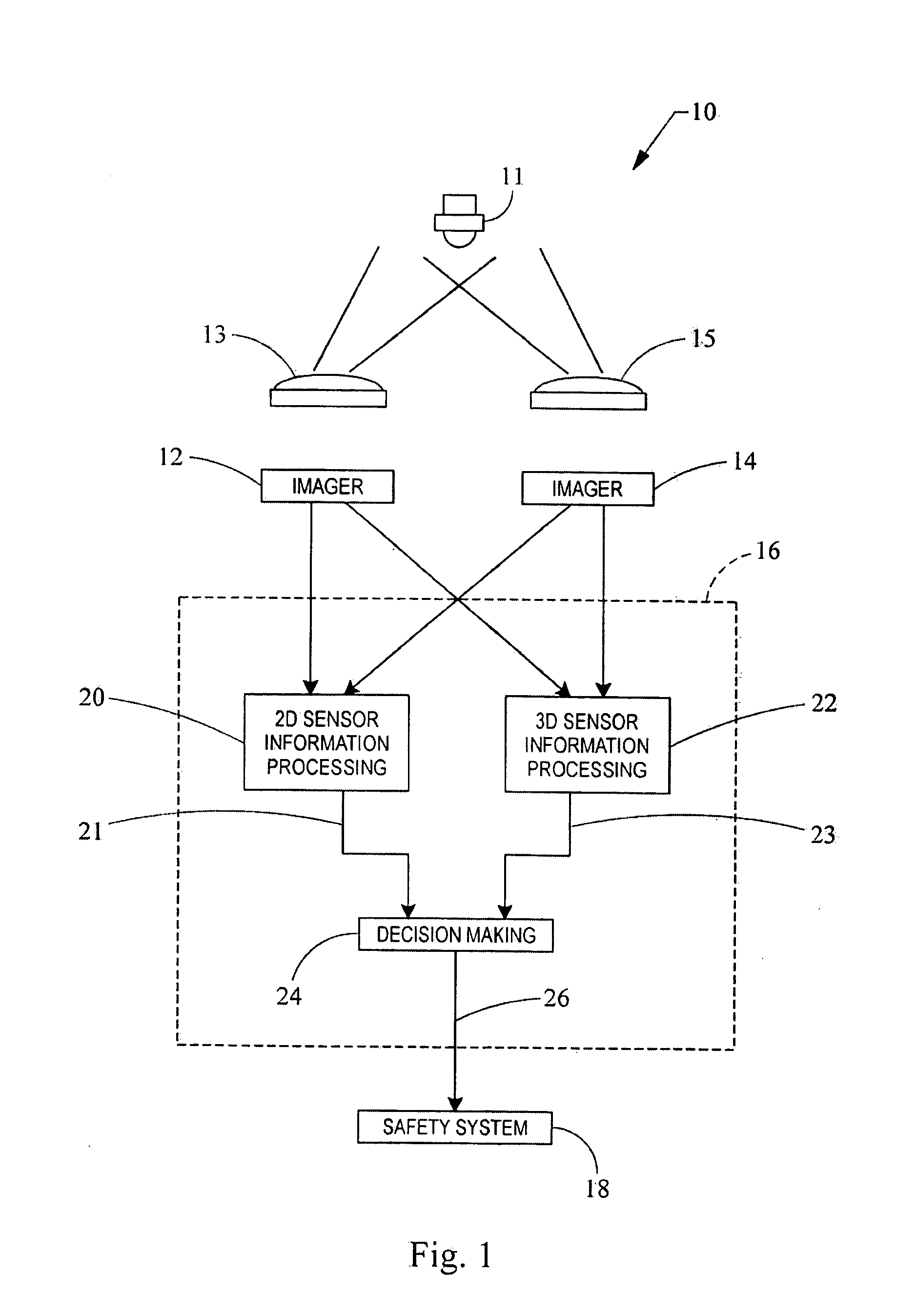Vision system for deploying safety systems
a safety system and vision system technology, applied in the direction of pedestrian/occupant safety arrangement, process and machine control, instruments, etc., can solve the problems of significant motor vehicle fatalities annually, inadvertent deployment of safety systems not only costly, and the height of bumpers remains the same. , to achieve the effect of slowing down the rate, and reducing the potential of injury
- Summary
- Abstract
- Description
- Claims
- Application Information
AI Technical Summary
Benefits of technology
Problems solved by technology
Method used
Image
Examples
Embodiment Construction
[0015]Referring now to FIG. 1, a system embodying the principles of the present invention is illustrated therein and designated at 10. The system 10 includes a first imager 12, a second imager 14, and a processor 16.
[0016]The first imager 12 and the second imager 14 are configured in a spaced relationship to view an object 11. The first imager 12 has a lens system 13 that is configured to view an object from a first direction. The second imager 14 includes a second lens system 15 configured to view the object 11 from a second direction. Since the first imager 12 and second imager 14 produce images of the object from different directions, the object may have a different apparent location between the first imager 12 and second imager 14.
[0017]The two-dimensional images from the first and second imager 12, 14, are provided to a two-dimensional information processing algorithm 20 in processor 16. The two-dimensional information from each imager 12, 14 may be used independently. For exam...
PUM
 Login to View More
Login to View More Abstract
Description
Claims
Application Information
 Login to View More
Login to View More - R&D
- Intellectual Property
- Life Sciences
- Materials
- Tech Scout
- Unparalleled Data Quality
- Higher Quality Content
- 60% Fewer Hallucinations
Browse by: Latest US Patents, China's latest patents, Technical Efficacy Thesaurus, Application Domain, Technology Topic, Popular Technical Reports.
© 2025 PatSnap. All rights reserved.Legal|Privacy policy|Modern Slavery Act Transparency Statement|Sitemap|About US| Contact US: help@patsnap.com



